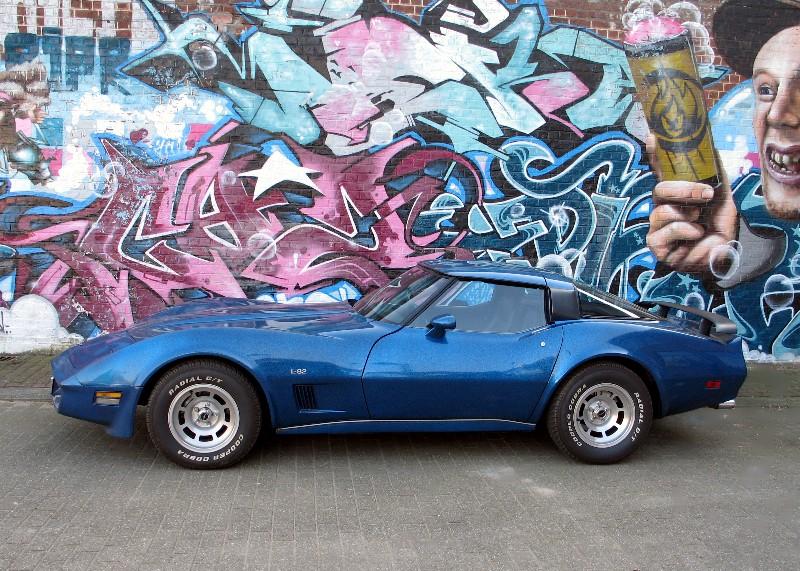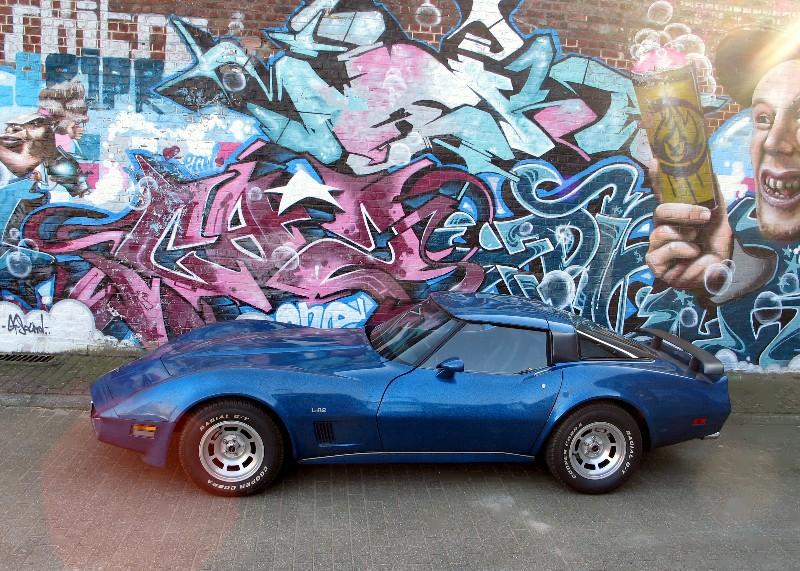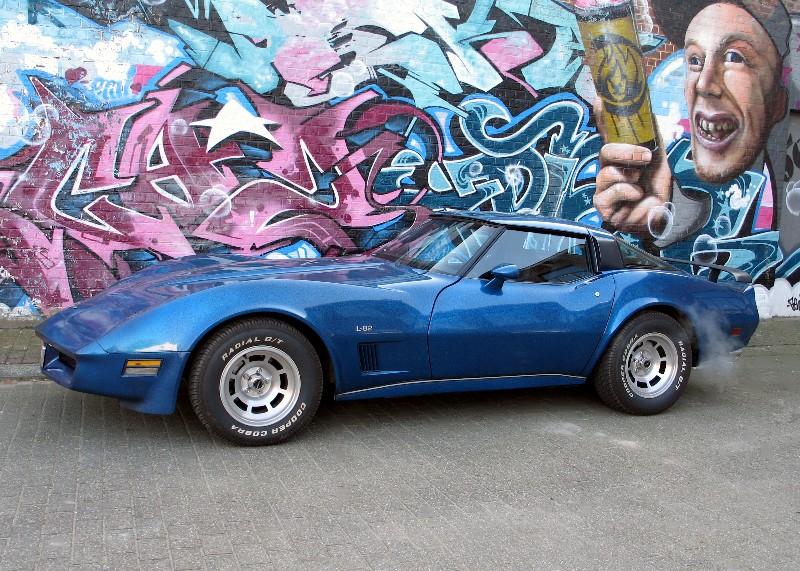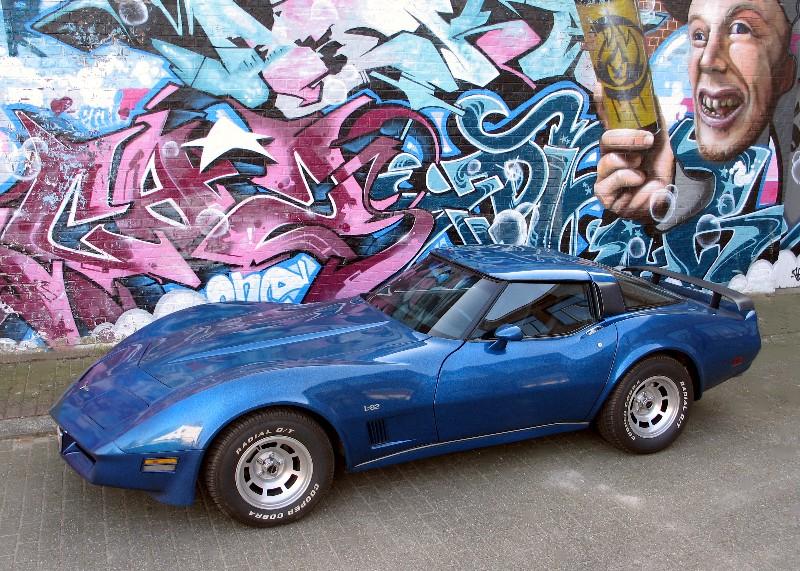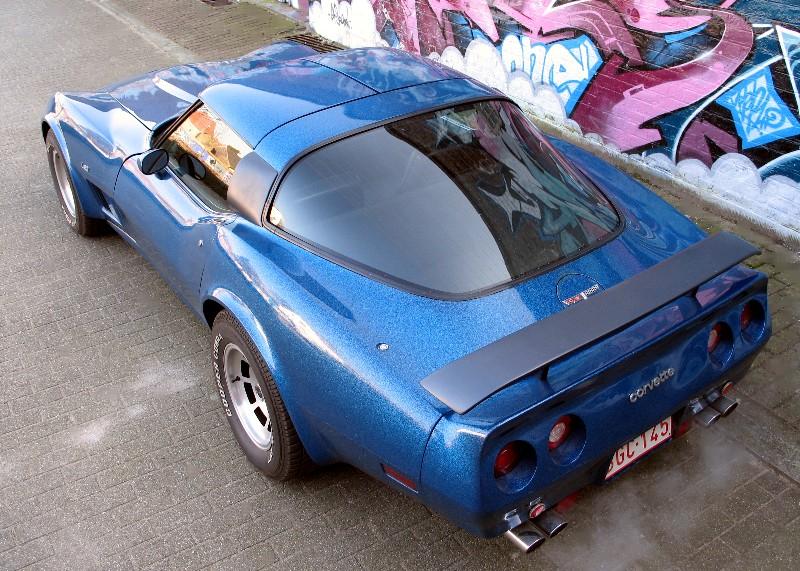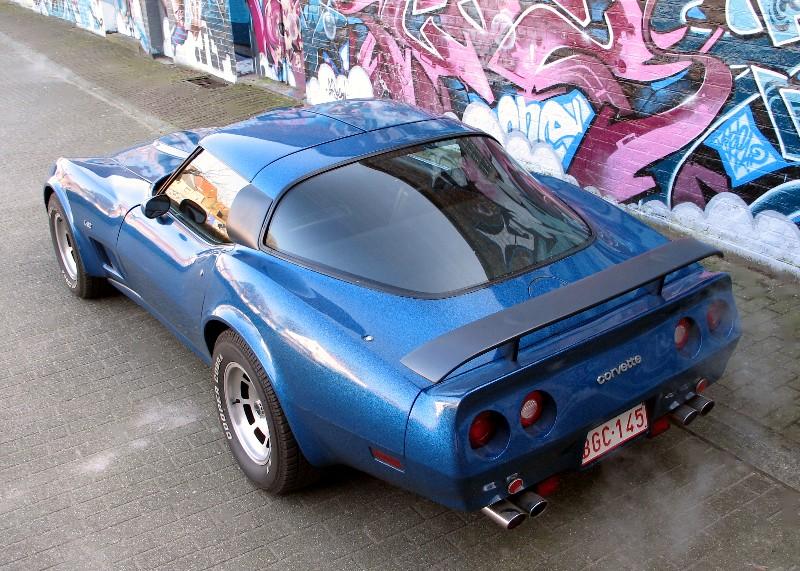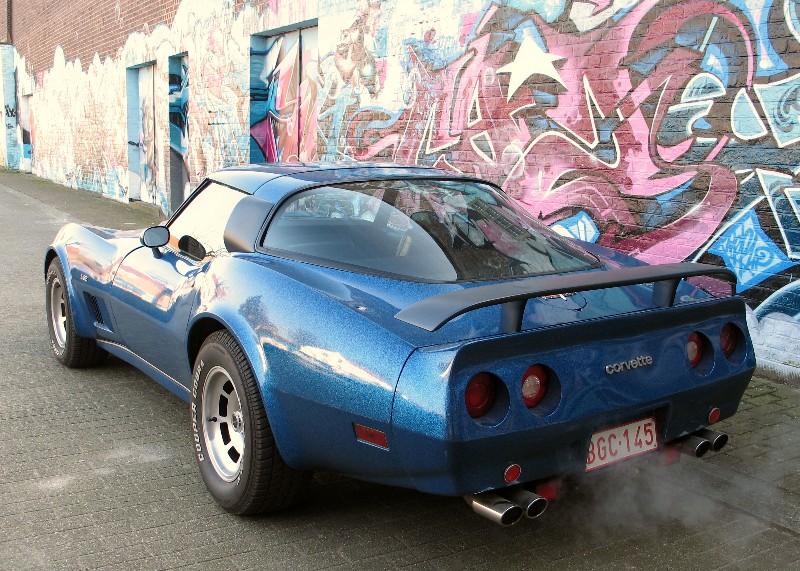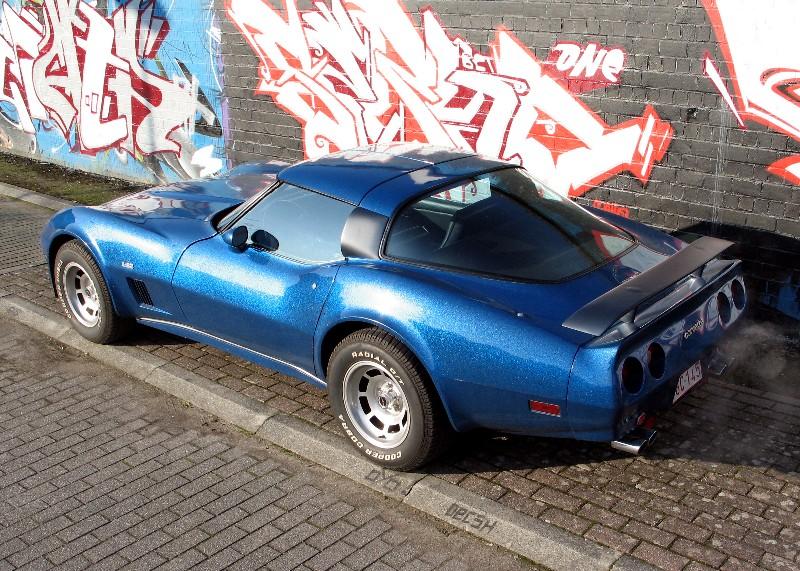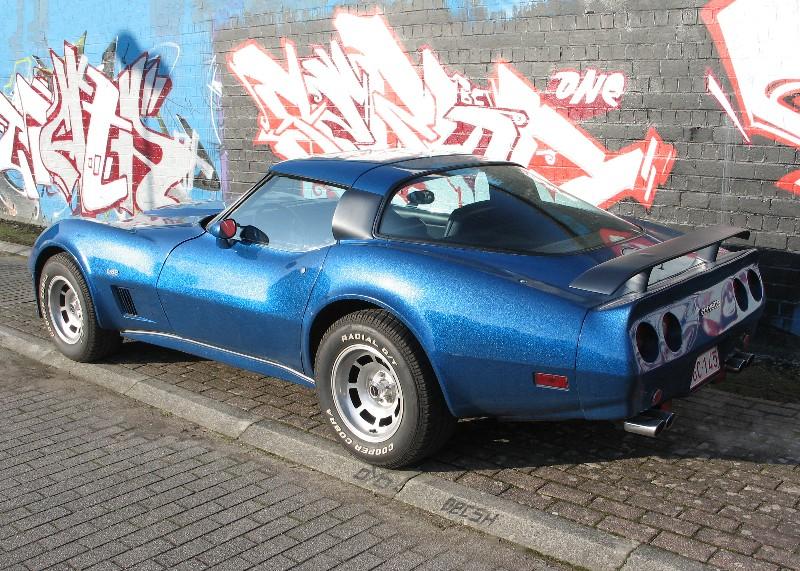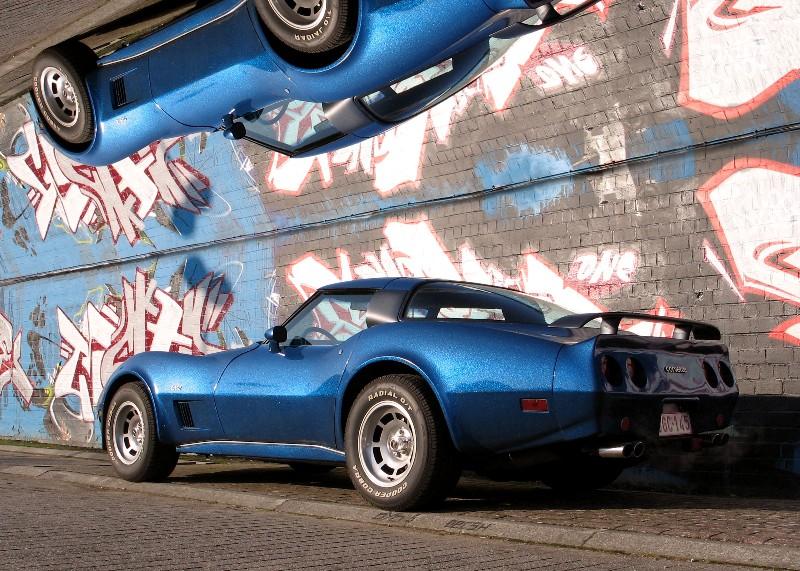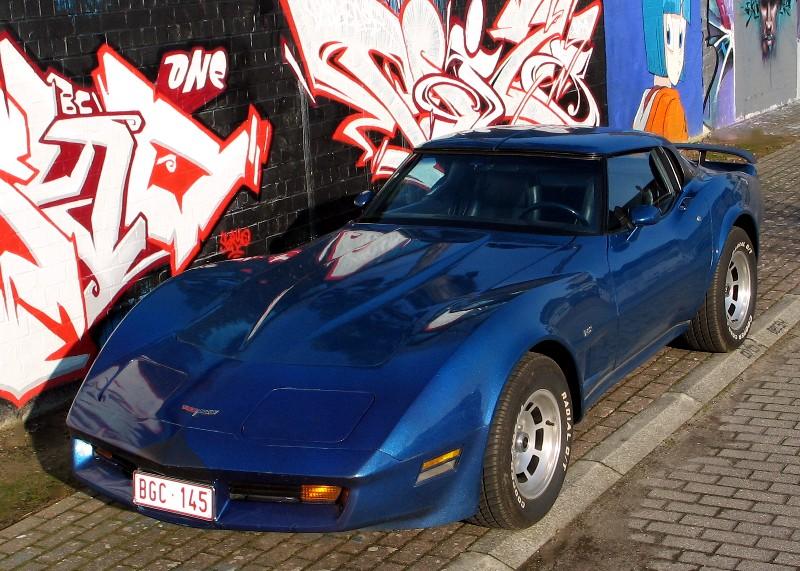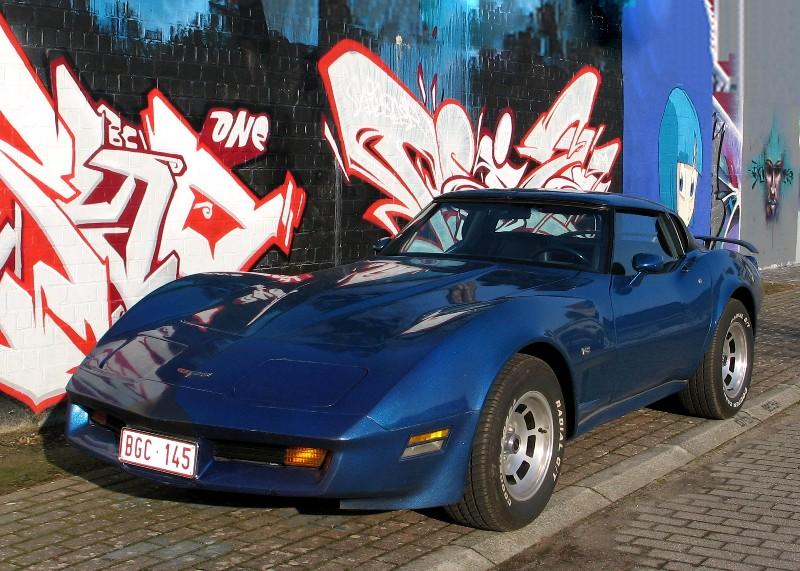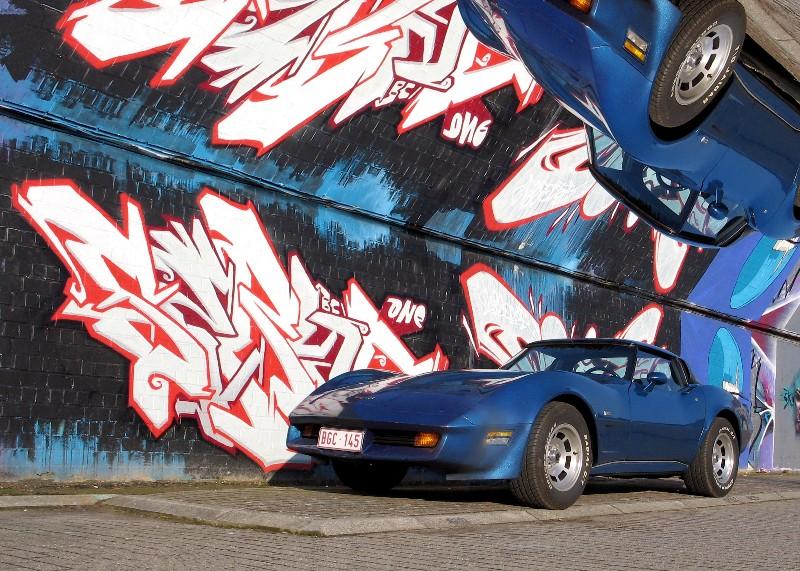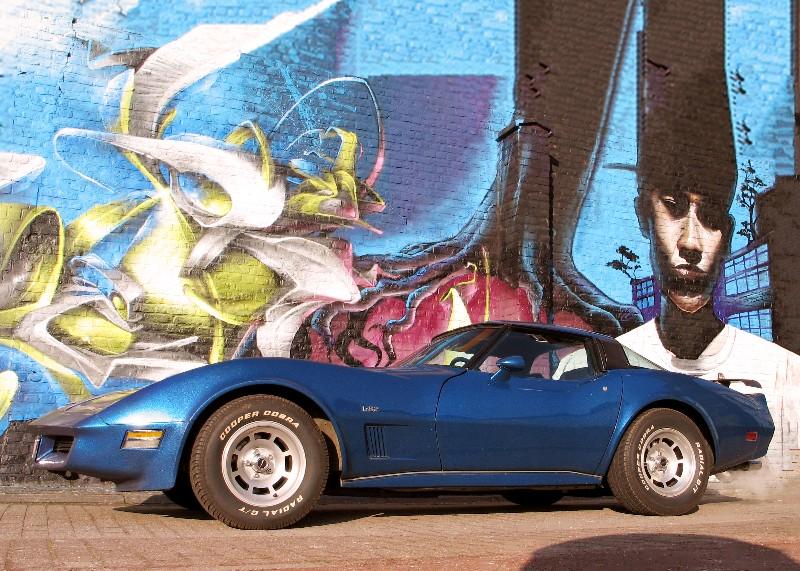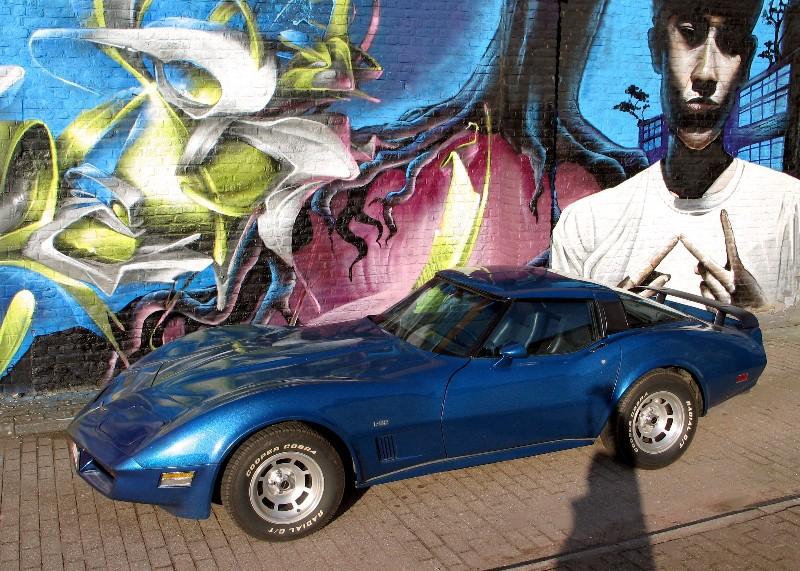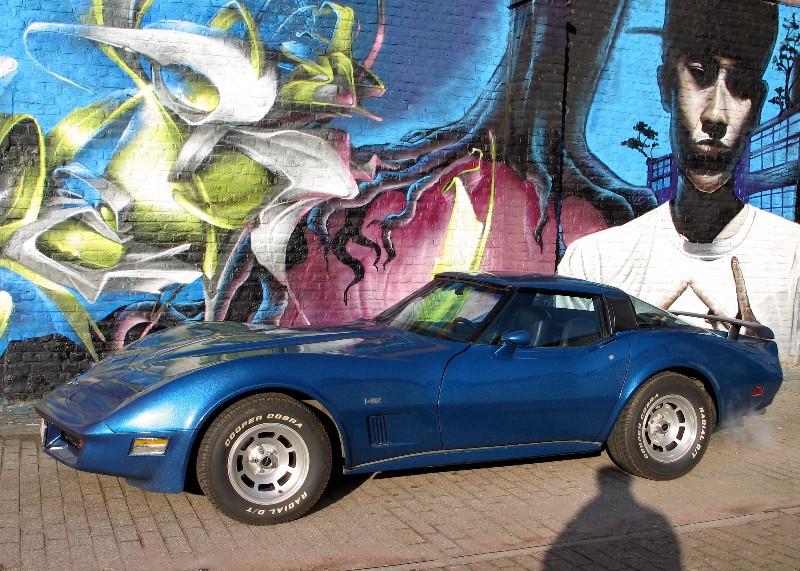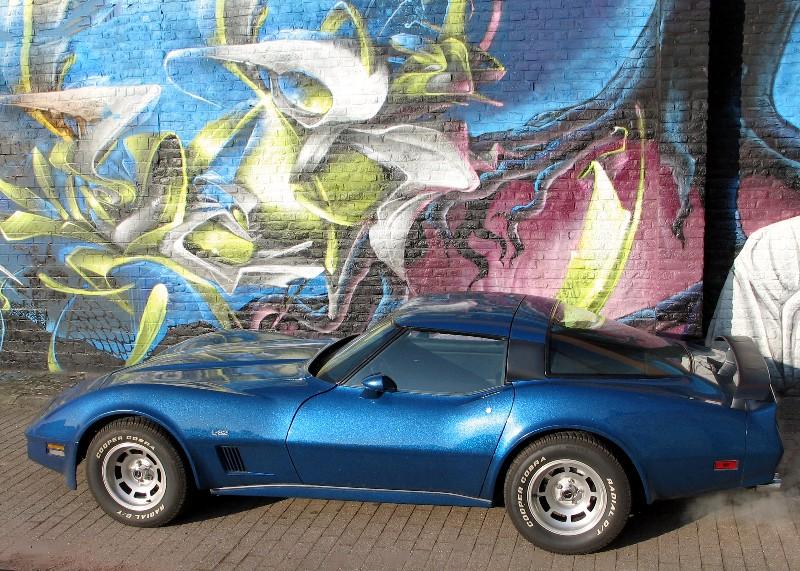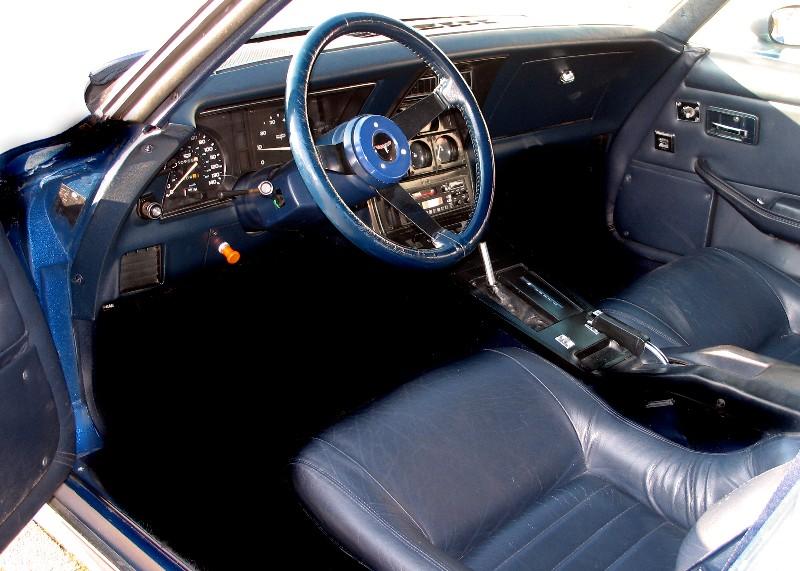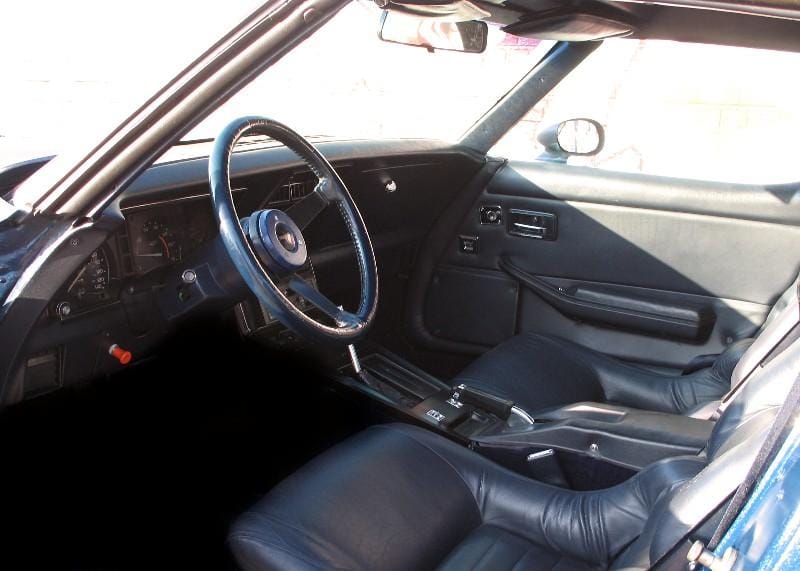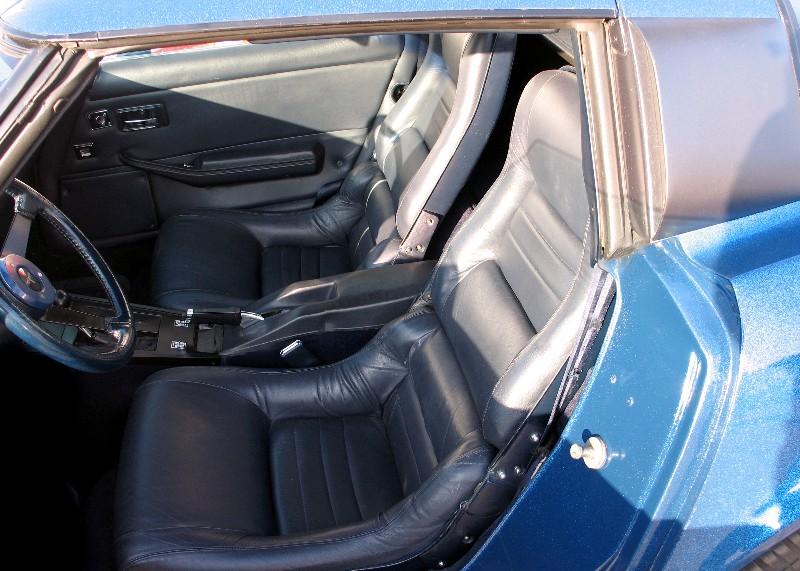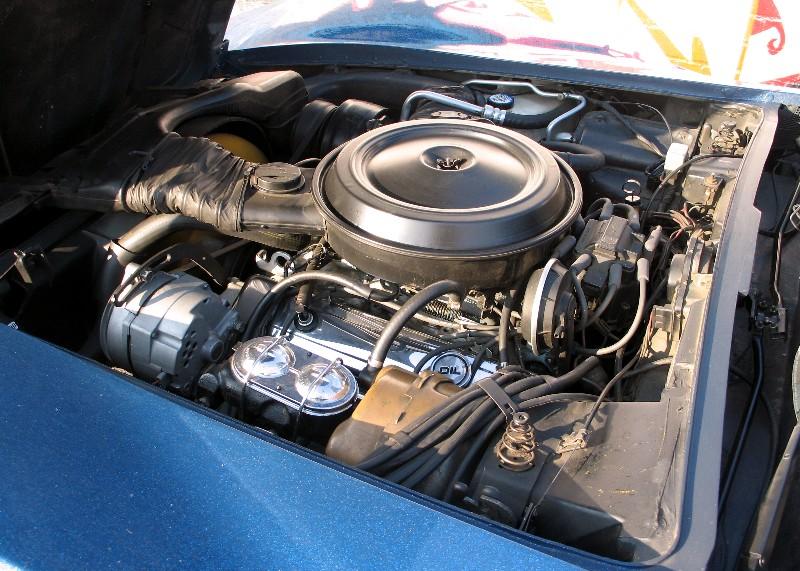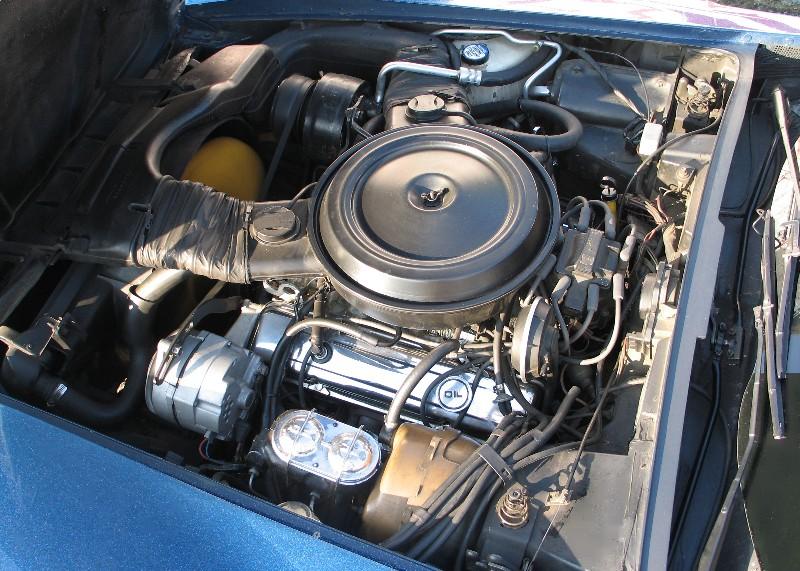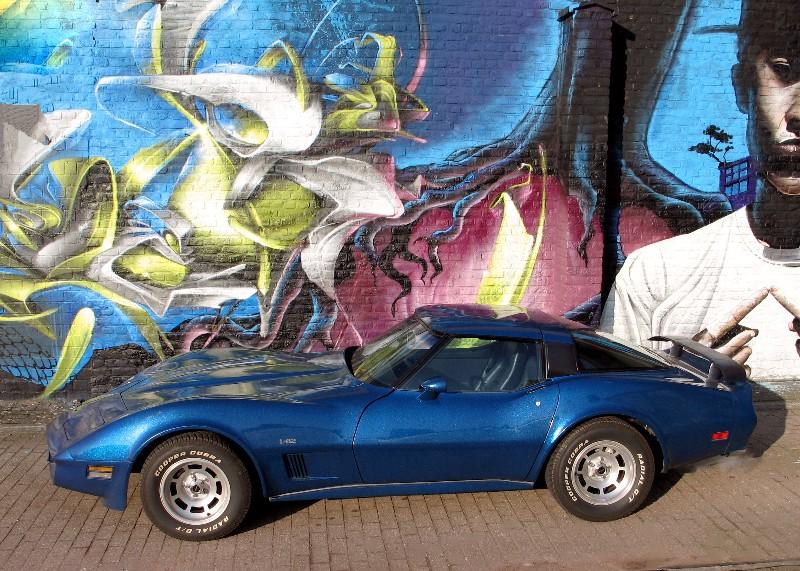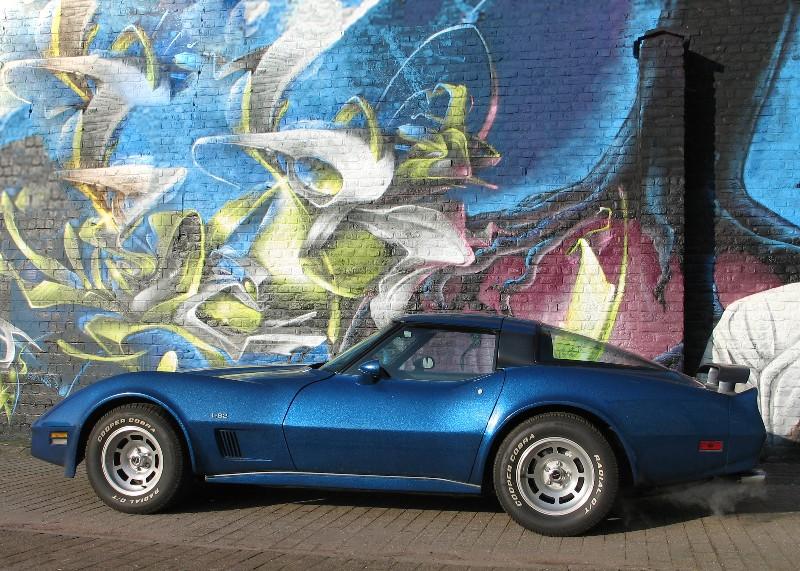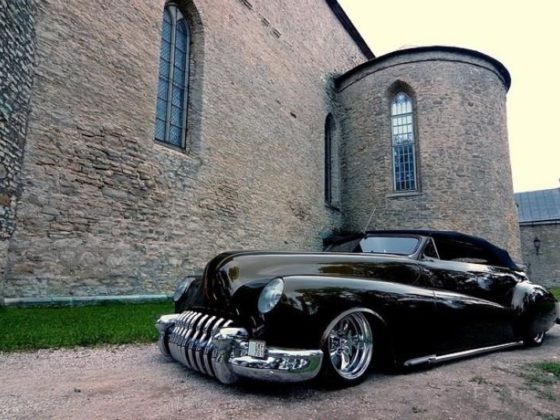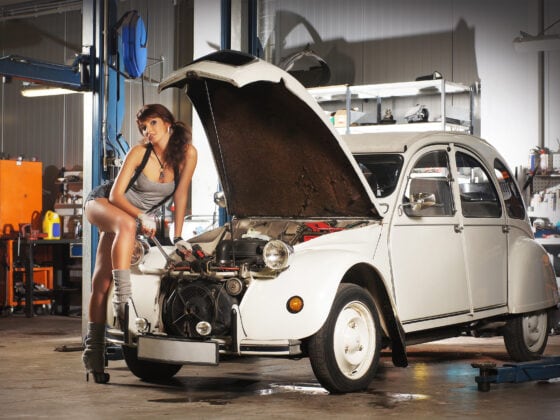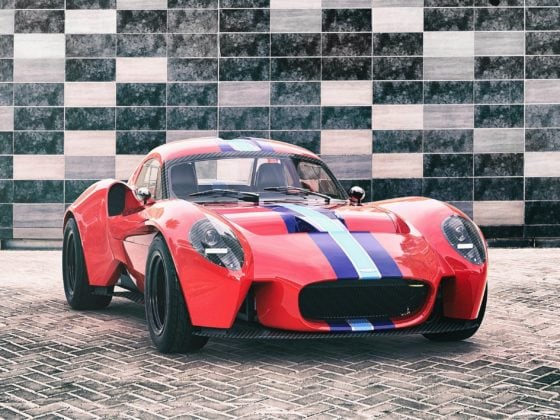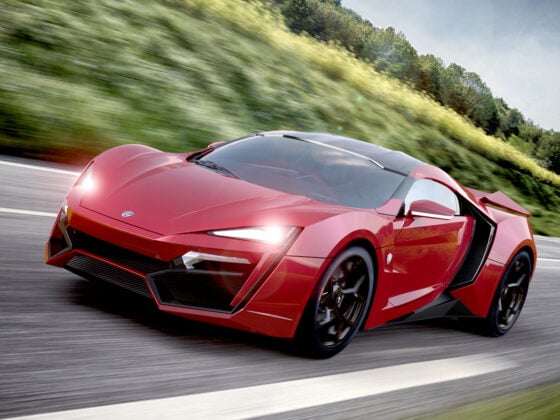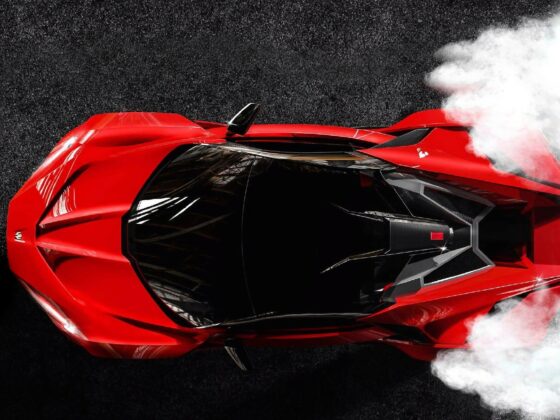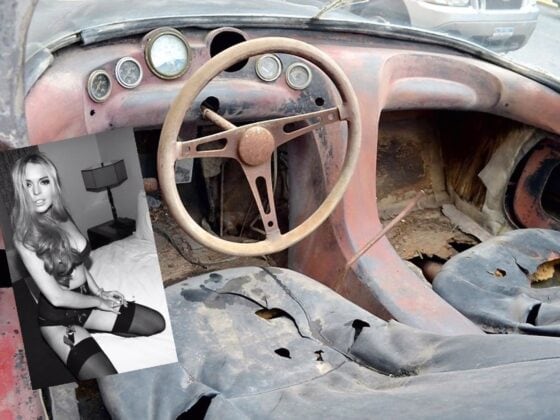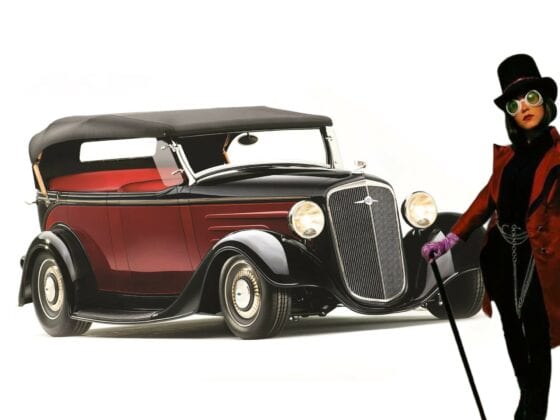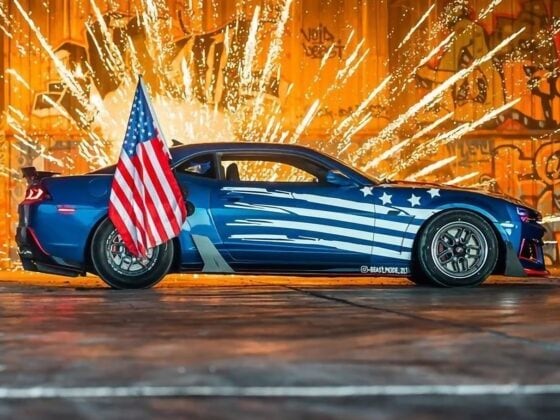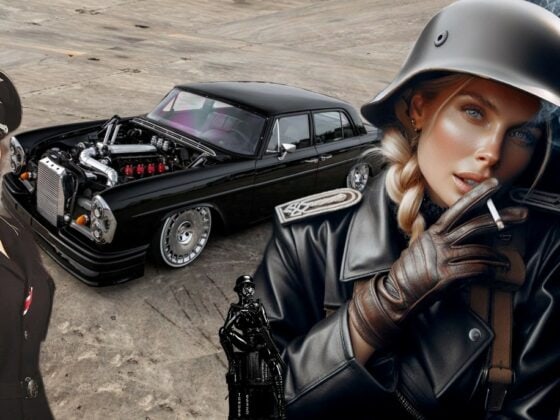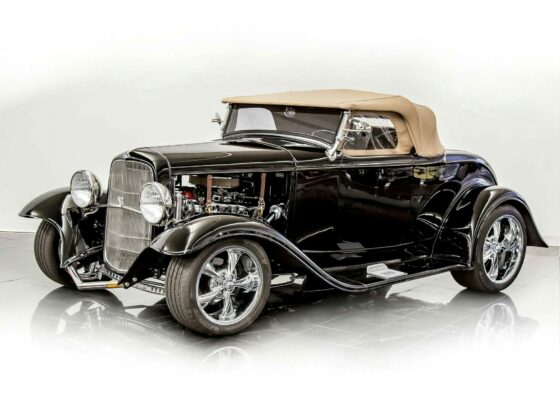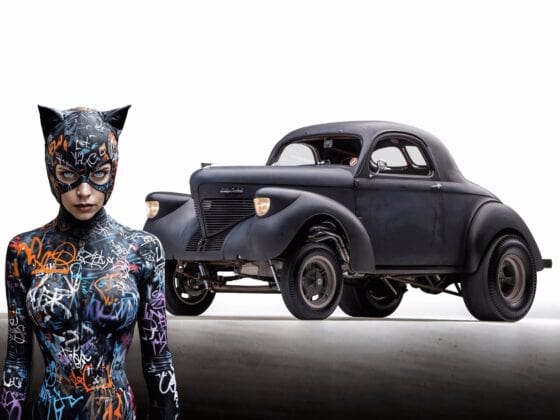If the video does not appear, please look here : http://www.vimeo.com/19357765
1978 Chevrolet Corvette L82…
It would take somebody with a pretty exquisite viewpoint and a surfeit of chutzpah to call the whole thing a bum idea now.
Imagine being such a thundering success that you can make a big deal out of some extra rear glass, a glovebox and an enlarged tailpipe !
Yet there she stands, groomed and ready for the faithful with $11,388 (1978 Price) worth of standard equipment and options – and GM will sell just about every one of the 43,000 or so it produces this year, quite a few of them sporting a special 2-tone silver/gray Silver Anniversary paint job.
Our test car was blue inside, however, flagrant as sin and proud of it.
No doubt about it, the Corvette is an idea whose time not only came in with a bang, but has already lasted for a quarter century.
An All-American Sports Car ?
Yup – it really is, and as we’ve said before, it’s a heck of a bargain.
The 1978 model isn’t revolutionary but this year it does have a little more here and there of those special qualities Corvette fanciers know and love.
For instance, the well established 350-cu-in.
V-8 has more vigor than last year’s in the standard L48 version and the optional L82 we tested, with 5- and 10-bhp boosts, respectively.
The L82 (not available in California) breathes a little more easily via a dual snorkel air intake as well as larger exhaust tubing and freer-flowing mufflers behind the catalytic converter.
As the figures show, it moves out smartly, going from rest to 60 mph in 6.5 sec and covers the standing quarter mile in 15.2 sec at 95.0 mph.
Both times are 0.3 sec quicker than last year’s model.
While the engine lacks the crisp response of earlier high-compression 350s and protested audibly under load on its diet of lead-free fuel, it’s capable of attaining its 6000-rpm redline in 4th and is a satisfying threat to just about any speed limit anywhere.
As expected, we found the drivetrain in the test car to be as tough and willing as ever, with the wide-ratio 4-speed manual waiting just below that hallowed, short, thick, console-mounted stalk.
This lusty alternative is barred to Californians, however, because of anti-smog strictures – they must make do with the automatic.
Our test car had the optional gymkhana suspension, with spring rates 50 percent higher than the standard setup.
The main change between last year’s and this year’s setups lies in re-valved and slightly larger rear shock absorbers, which give a little softer ride and better control.
But the uninitiated driver will find this suspension package overly harsh at first, with plenty of stiff bobbing and bouncing over minor road imperfections, as well as a lot of hood length swinging this way and that at the end of the steering column.
This soon passes, however, and evolves into confidence in the machine’s unquestionably solid, firm and dependable surface adhesion.
Braking is superb, with almost no front dive, excellent control and smooth deceleration down to about 5 mph where, strangely, the brakes locked and emitted billows of white smoke.
Driving in the heavy rains we encountered during the time we had the car had almost no effect on brake dependability.
Some of the early models off the line were afflicted with an unsettling clunking of the standard limited-slip differential, and our test car was one of them.
Apparently caused by new machinetooling, the problem was corrected early in the model run, and is controlled in the others with a double-draught of lube additive.
We inherited a set of shaved 70-series Goodyear Polysteel radials.
In the interest of reduced squiggle and more precise handling, about half the tread had been removed.
The operation was a success, though rather a profligate gesture for the average owner.
A 60-series radial is an option but at present, according to Corvette engineers, the 70-series tires are quieter, corner better, have better on-center feel and simply give the Corvette a better ride.
The reason ?
Because of a corporate edict requiring a switch to P-metric radials, Corvette engineers had to change tires midstream and evaluate numerous metric-size radials.
The P225/70R-15s turned out better than the optional P225/60R-15s (except for looks) and the engineers decided the 70s were too good to pass up.
Development is underway toward upgrading the 60-series radials.
Tire pressure recommendations for the car have shown a steady increase during the past few years.
The modest 20 psi front and rear pressures recommended as standard in 1975 rose to 20/26 for 1976 and 1977, and have been pumped up to 28/32 for 1978.
This change results in an impressive skidpad improvement: from 0.726g last year to 0.798 for the current model.
In the slalom, however, the 1978 version was 2.4 mph slower than the record-setting 63.6-mph pace of the 1977 car.
This is probably a reflection on the test track surface, which was dry but dusty as a result of runoff from some rare but very welcome California rains and a 3-percent increase in rear weight bias.
No doubt about it, more is better for handling and probably also for a little better fuel economy (we got 15.0 mpg, same as 1977), but owners with sensitive kidneys may well find that dropping back down to the 20/26 setup will get them off the beaten tract.
And now a word about the standard burglar-alarm system.
It is alarming for sure, with an urgent and penetrating “woop-woop-woop”, and we recommend that every new owner master the damned thing before he tries opening a door in the dark in a quiet residential neighborhood as we did.
Reliving the events that transpired during that frantic five minutes has no place in this road test, but suffice to say that it is a resoundingly fine alarm and that the owner should read the portion of his Owner’s Manual early and carefully.
The large, fastback rear window is a major styling adventure for Corvette, providing immediate, unmistakable identification of the 1978 model and much improved rear-quarter vision.
Unfortunately it’s not openable as a hatchback, a feature that would help in loading and unloading the rear package area.
However, the usable luggage area is more than double (9.5 cu ft vs 4.4) that of last year’s model.
Also, a rear washer and wiper don’t exactly fit the Corvette image, but they certainly would help keep that big (1425 sq in.) glass panel transparent.
Inside, a black “security cover” can be pulled forward and hooked to hide valuables in the back.
The optional rear-window heater costs $95 and consists of heating-element wires laminated into the glass – definitely worth the price in safety and peace of mind.
Ventilation proved to be a problem.
We never did get the front vents to supply adequate fresh air and had to drive with the side windows partially open.
Also, the defroster put out hot air even with the temperature control in the “cold” position.
Inside the car, all is combined opulence and purpose – again, as it should be in a Corvette.
The interior appointments are plush, comfortable and useful, from the leather-wrapped steering wheel to the new glovebox, and from the firm leather and cloth covered seats to the compartments sunk into the package shelf behind the seats – one for the battery and two (one lockable) for stowage.
Some side space has been traded for the luxury of padded door panels and shoulder room is 0.4-in. less than the 1977 model.
Instrumentation is complete and readable, with all dials, gauges, buttons and switches surrounded by flat-black, non-reflective backgrounds.
The speedometer and tachometer have been brought out of their deep recesses this year, making both far more readable and giving these gauges a cleaner, crisper and more modern look.
Also, the trip odometer has been placed within easier reach.
A couple of complaints came through that the wiper and radio controls were beyond normal reach and that the driver had to look away from the road to find them.
The wiper/washer location is a compromise, however, and probably will be changed yet again in the 1979 models.
In 1977, the much-used turn-signal lever had to be located a long way from the hand to include all its multi-function operations (washer/wiper/turn signal/headlight beam selector).
The cost of redesigning the steering column layout couldn’t be justified for the 1978 model year so the only option was to move the wiper control to the instrument panel.
The radio turned out to be one of these triumphs of electronics – a (hang on, now) combination AM/FM Stereo/CB Transceiver, with automatic control of its “tri-band” receiver/broadcast power antenna.
The price is hefty at $638 and so is the performance.
The entertainment really begins when the radio is turned on and, with a muted whirrrrrrrr, the combination antenna climbs skyward out of its dimple in the left-rear flank.
Then the sound begins, and it is good.
The interior of the Corvette is a natural sound chamber and the rear-mounted stereo speakers make the most of it.
The CB microphone hangs onto the console with its little Velcro pad and, as a final fillip, the circuitry and squelch control can be so balanced that the CB will interrupt regular radio programming only when it has a strong reason to do so.
This is some radio and it is just one of the several radio/CB/tape combinations available.
Corvette owners who opt for electric window lifts will soon learn to be sure both windows are fully up before they shut off the ignition.
It is an annoyance to re-locate the key, endure the buzzer and finally manipulate the key-removal lever – just because the window had been left down a half inch.
On the other hand, there are sound safety and security reasons for the location and function of the window switches – for one, small children can’t reach the button and the edge of the window at the same time.
A little space has been gained underbody by the substitution of one of those new, lightweight spare tires (which always brings up the musical question, “And where, oh where does the old flat go when you have to use the spare ?” …
The space, however, has been used in fine fashion for the installation of a new 24.0-gal. gas tank (up from 17.0 in 1977) constructed as a safety-engineered fuel cell, with a plastic liner inside the steel shell.
So there it is – a fine, luxurious sports machine born in the U.S. and bred and interbred over a quarter century to American taste and style.
Does it satisfy ?
Well, the young men still pay close attention and the young girls still turn and smile, and, of course, the Porsche drivers still show a certain stiff disfavor.
Yes, friends, it isn’t altogether painful to drive a brand-new Corvette over the roads of its native land.







